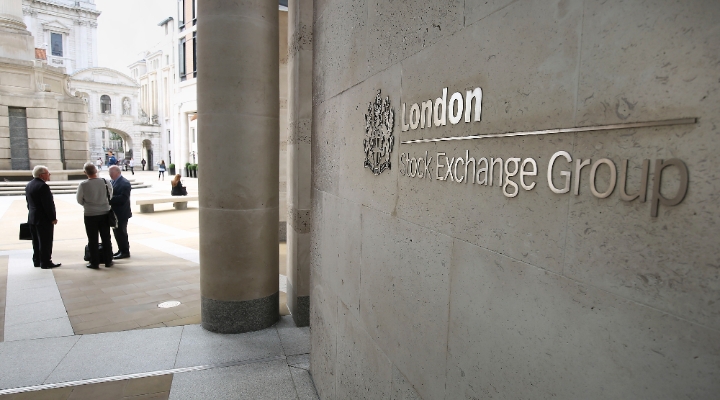Mick Green, a retired company director, has built up a substantial portfolio of investment trusts. He says: “I’ve always been interested in investments, but when the engineering company I worked for was sold 15 years ago, it enabled me to focus more on this.”
He invested the capital raised from this sale in a portfolio of trusts and funds. Since then he’s been looking to grow this capital, to ensure it provides a reliable income stream to supplement his workplace pension and State Pension.
Green says it was a combination of low charges, plus superior performance that made him look more closely at investment trusts.
“There was a number of cases were a manager ran a unit trust and investment trust in parallel. The investment trust invariably outperformed, largely due to the lower ongoing charges,” he said.
Green doesn’t solely hold investment trusts, although these make up the bulk of his portfolio. He has around 10 to 15% of his money in direct shareholdings and also invests in some open-ended funds.
Most of his holdings are long-standing investments.
“I tend to adopt a buy and hold strategy; I rarely sell, unless I want to crystallise gains, then I make the most of my CGT allowance,” he said.
Higher Risk Investments for a Pension Portfolio
Green holds a range of trusts, some have an outstanding record of paying rising dividends; others that are more focused on capital growth. Although he is now retired he still has a reasonable slice of his portfolio in sectors that are traditionally seen as higher risk, including emerging markets, the Far East and smaller company trusts.
“I may be retired now but I intend to keep this money invested – hopefully for 20 or more years. I am therefore comfortable with the degree of volatility that is part and parcel of investing in such areas.”
These trusts include Henderson Far East Income (HFEL) and Templeton Emerging Markets (TEM).
The Henderson Trust has a four-star performance rating. Although its managers still have just a Neutral Rating, Morningstar fund analysts say their conviction is growing in this trust. The Trust has delivered on its promise to grow income and although capital appreciation was shaky in the early years – following a relocation from its UK base to Guernsey in 2007 – this has improved more recently.
The fund has beaten peers and its benchmark over the last three years.
In contrast, Templeton Emerging Markets has waned a little of late. This trust was managed by Dr Mark Mobius, one of the most experienced and successful manager in this sector. But he is stepping down as lead manager on October 1. As a result, Morningstar has placed its rating of this trust ‘Under Review’. Mobius will be replaced by Carlos Hardenberg, a senior member of Templeton Emerging Markets Group.
The returns, long-term, have been good – the trust has a three star rating from Morningstar – but it has been more volatile than some of its peers. In 2009, for example, the fund outperformed its peer group average by more than 30%, but it lost nearly 7% more than this average performer in 2008.
Although emerging markets have not performed well of late, Green says he is content to ride out this part of the cycle: “I think they are a good long-term growth opportunity and I’m confident both have good teams in place.”
UK Shares to Balance Emerging Market Volatility
Green has a balanced portfolio, including Aberdeen Smaller Companies High Income Trust (ASCH) and City of London Investment Trust (CTY) which invests mainly in larger cap UK shares.
This smaller companies trust has a three star rating from Morningstar, and has seen made a 17% return in the last year alone. Investors have made 22% over three years.
The City of London Trust is described as a ‘standout’ investment by Morningstar analysts. It has a five-star rating and its manager Job Curtis – who has been at the helm for more than 20 years – has a coveted Gold Medal rating. The fund has increased its dividend payout for more than 47 years – a record yet to be matched by any other fund, and a reminder of the benefit of a consistent and cautious investment strategy – and the importance of building revenue reserves to draw on in tougher times.
Green says he makes the most of tax efficient vehicles, like ISAs. He makes sure both him, and his wife, utilise their full allowance each year. This enables them to maximise the income they can tax tax-free. He also invests a regular sum of money into each of his grandchildren’s child trust funds.
He says: “I’m not overly worried about current economic conditions. I haven’t sold any holdings, for example.”
In fact, he says he is looking for the opportunity to invest more. “I have some money in cash on the sidelines. I’ve been waiting to invest since the market hit its peak of around 7,100. When it drops to around 20% of this peak I’ll start to invest a tranche of this. It’s just a case of waiting for the right time.”
How do you decide what funds or shares to buy? Do you have a fail-safe sell trigger? If you'd like to feature in Investment Views and tell us about your investment strategy please contact the Editorial team on editorial@morningstar.co.uk




























